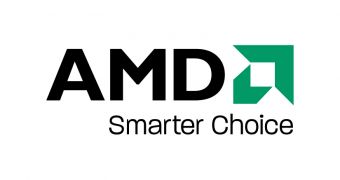It looks like Advanced Micro Devices is getting its RV710 and RV730 mainstream and low-end products on the market this September. The RV710 chip is said to feature Hybrid CrossFire capabilities. Although the company would not disclose too much info on the GPUs, they are believed to be AMD's response to Nvidia's recently launched GeForce 9500 GT and 9800 GT cards. Next month should be an interesting one at least in what concerns the mainstream market area.
The news about the two chips reaches us via the Bit-tech website, which also ventured some guesses on the new AMD products. While HD 3670 has 120 stream processors, the possibly named HD4670 could come with 240 or 320, and it may also be a rebranded HD 3850. Some suppositions can also be made on the fabrication process the company may choose for the product.
Earlier rumors said that the cards would come with 512MB or 1GB of graphics buffer memory. It seems that AMD sees this as a good marketing thing, since users may believe that greater numbers mean better performance, and that could determine them to buy some products over others. No interdictions have been set for partners as far as the features they add to the cards go, so all kinds of clock speeds, memory quantities or cooling solutions are expected to appear on the field.
When asked about the competition with Nehalem, AMD told Bit-tech that "[it] will have the leading multi-GPU platform at the time of launch thanks to Intel's X58 chipset supporting CrossFireX." The Santa Clara-based Nvidia also has an X58+NF200 SLI solution, so we should also expect it to come up with something.
AMD has stressed again the fact that its 45nm products will be available starting with the fourth quarter of 2008. The clock speeds are also expected to be fast ones. The actual products will speak for themselves, for sure. Also then, we will see what kind of difference they will make from the Phenom.
According to AMD, the cache has been highly increased on the new products. The performance of the memory controller is said to have been worked upon, and some other improvements and optimizations have been added as well, although it still goes on the current K10 architecture. However, the company refrained from giving specific details on the changes.

 14 DAY TRIAL //
14 DAY TRIAL //